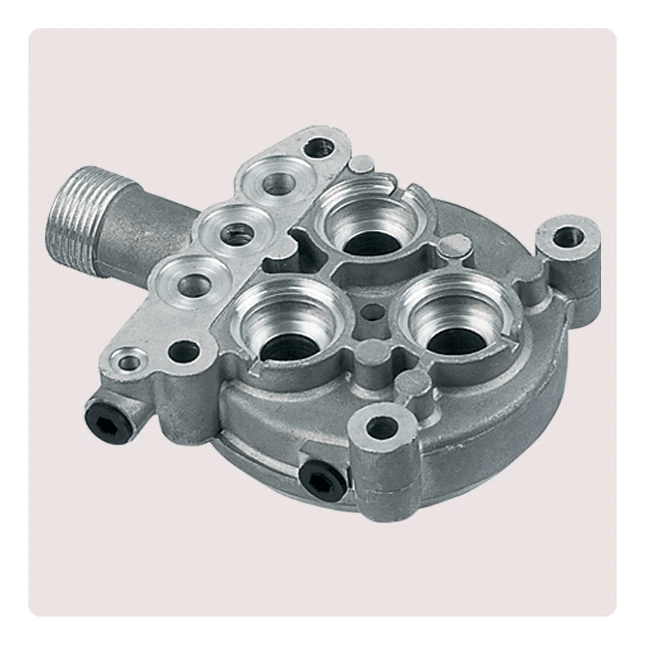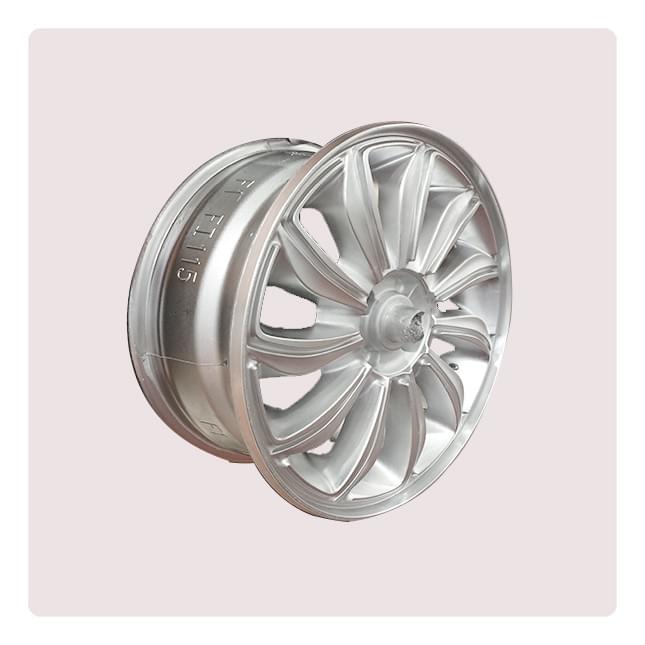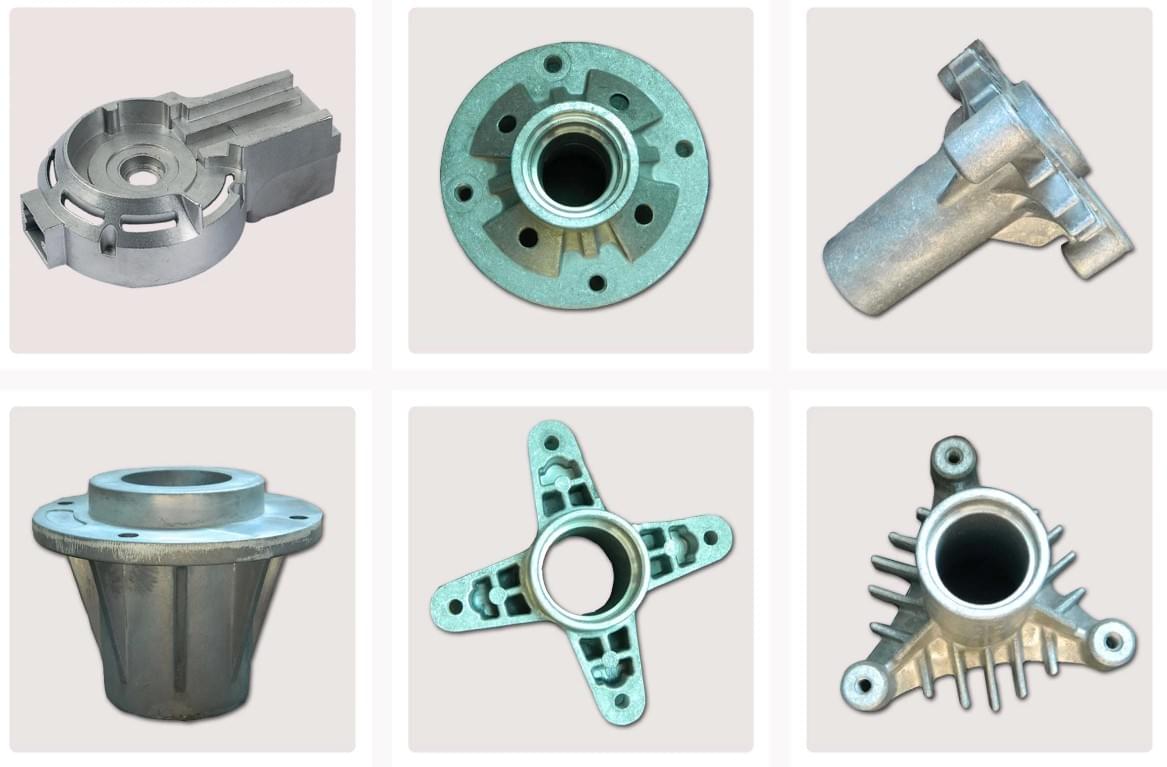Introduction

When it comes to metal casting, especially aluminum casting, understanding the causes of casting porosity is crucial. Casting porosity refers to the presence of voids or holes in a metal casting, which can compromise its structural integrity and overall quality. Identifying common causes of casting porosity is essential for ensuring high-quality aluminum castings and minimizing the need for secondary operations.
Understanding the Causes of Casting Porosity
Casting porosity can be caused by various factors such as impurities and inclusions in the metal, mold design flaws, process control issues, environmental factors, and operational errors. These factors can lead to defects in the final aluminum casting, affecting its performance and durability.
Importance of Identifying Common Causes
Identifying common causes of casting porosity is important for manufacturers and engineers involved in mold casting and aluminum casting die processes. By understanding these causes, they can take proactive measures to prevent porosity issues and achieve high-quality aluminum castings that meet industry standards.
Metal Quality

When it comes to preventing casting porosity, the quality of the metal used in the casting process is crucial. Impurities and inclusions in the metal can lead to defects in the final product, making it essential to carefully monitor and control the metal quality throughout the casting process. At Buttler Precision Machinery Co., Ltd., we prioritize using high-quality aluminum alloy for casting to ensure superior results for our clients.
Impurities and Inclusions
Impurities and inclusions in the metal can lead to casting porosity, compromising the integrity of the final product. It is essential to conduct thorough inspections of the raw materials before initiating the mold casting process to identify any impurities or inclusions that could result in defects. By using advanced techniques and stringent quality control measures, we at Buttler Precision Machinery Co., Ltd. ensure that our aluminum metal casting is free from impurities and inclusions, resulting in high-quality castings.
It is also crucial to carefully monitor the temperature and speed of the casting process, as these factors can impact the formation of impurities and inclusions. At Buttler Precision Machinery Co., Ltd., our team of experienced technicians closely monitors every stage of the aluminum metal casting process to ensure that impurities are minimized. Additionally, we utilize state-of-the-art filtration systems to further purify the molten metal, resulting in a final product that meets the highest quality standards.
Alloy Composition
The composition of the alloy used for casting plays a significant role in determining the quality of the final product. At Buttler Precision Machinery Co., Ltd., we understand that selecting the right aluminum alloy for casting is essential for achieving superior results. Our team of experts carefully considers factors such as strength, corrosion resistance, and machinability when choosing alloy compositions for our aluminum casting die, ensuring that our clients receive top-notch castings that meet their specific requirements.
Additionally, our team considers the casting process and the specific requirements of our clients when determining the alloy composition. By taking into account factors such as thermal conductivity and weldability, we ensure that our aluminum casting die is optimized for efficient and effective production. This attention to detail allows us to deliver high-quality castings that not only meet industry standards but also exceed our clients' expectations.
Mold Design

When it comes to preventing casting porosity in aluminum metal casting, mold design plays a crucial role. Proper mold venting is essential to allow gases to escape during the casting process, reducing the risk of porosity. This ensures that the molten metal fills the mold cavity completely and uniformly, resulting in high-quality aluminum castings.
Mold Venting
Effective mold venting is essential for minimizing the formation of gas porosity in aluminum casting. By incorporating strategically placed vents in the mold design, trapped gases can escape without causing defects in the final casting. This helps to achieve a smooth and dense surface finish while maintaining dimensional accuracy in the cast parts.
Mold Temperature Control
Controlling mold temperature is another key factor in preventing casting porosity during aluminum metal casting. Maintaining proper mold temperature ensures that the molten aluminum solidifies uniformly, reducing the risk of shrinkage and porosity formation. By optimizing mold temperature control, manufacturers can consistently produce high-quality aluminum castings with minimal defects.
Proper mold temperature control also plays a crucial role in minimizing the formation of internal defects such as hot tears and cracks in aluminum castings. Consistent and uniform mold temperature helps to prevent thermal stress within the casting, resulting in a more structurally sound final product. This level of control also allows for better dimensional accuracy and surface finish, improving the overall quality of the castings.
Partner with Ningbo Buttler Precision Machinery Co., Ltd. for superior die-casting molds and expert engineering solutions to optimize your metal casting process and achieve high-quality results without porosity defects!
Process Control

When it comes to metal casting, maintaining the right pouring temperature is crucial in preventing casting porosity. The temperature at which the molten metal is poured into the mold greatly impacts the final quality of the casting. By carefully controlling and monitoring the pouring temperature, manufacturers can minimize defects and ensure high-quality aluminum castings that meet industry standards.
Pouring Temperature
Optimizing the pouring temperature is essential for achieving successful aluminum casting. If the temperature is too high, it can lead to excessive shrinkage and gas porosity, while a low temperature may result in incomplete filling of the mold cavity, causing defects in the final product. By closely monitoring and adjusting the pouring temperature based on the specific requirements of each casting job, manufacturers can effectively reduce the risk of casting porosity and produce superior aluminum castings.
After optimizing the pouring temperature, the cooling rate also plays a crucial role in ensuring high-quality aluminum castings. A controlled cooling rate is necessary to prevent the formation of internal stresses and cracks in the casting. Rapid cooling can result in uneven solidification and thermal gradients, leading to defects such as hot tears and distortion. On the other hand, excessively slow cooling can prolong the solidification process, increasing the likelihood of microstructural issues and reduced mechanical properties. Therefore, adjusting the cooling rate based on the specific alloy composition and casting geometry is essential for achieving uniform and defect-free aluminum castings.
Cooling Rate
In addition to controlling pouring temperature, managing the cooling rate during solidification is equally important in preventing casting porosity. Proper cooling rate ensures that the molten metal solidifies uniformly without creating internal voids or defects. By implementing advanced cooling techniques and technologies, such as controlled cooling systems and strategic placement of cooling channels within molds, manufacturers can achieve precise control over the cooling rate, resulting in high-quality aluminum castings with minimal porosity.
Furthermore, the use of computer-aided simulation software can also help in optimizing the cooling rate by predicting the solidification process and identifying potential areas of porosity. This allows manufacturers to make necessary adjustments to the cooling system and mold design before actual production, saving time and resources. Additionally, monitoring and analyzing the cooling rate during the casting process can provide valuable data for continuous improvement, leading to further reduction in porosity and enhanced overall casting quality.
Environmental Factors

When it comes to aluminum metal casting, environmental factors play a crucial role in determining the quality of the final product. One of the common environmental factors that can lead to casting porosity is gas and air entrapment within the mold. This occurs when gases are trapped during the pouring process, leading to voids or pockets within the casting. Proper mold design and venting can help mitigate this issue, ensuring high-quality aluminum castings.
Gas and Air Entrapment
Gas and air entrapment can be a result of inadequate mold venting, where trapped gases have no way to escape during the filling process. This can lead to defects in the final aluminum casting, impacting its structural integrity and overall quality. By optimizing mold venting design and ensuring proper ventilation channels, manufacturers can minimize the risk of gas and air entrapment, ultimately reducing the occurrence of casting porosity.
In addition to mold venting, moisture content can also contribute to defects in aluminum casting. Excess moisture in the mold material can lead to steam formation during the casting process, resulting in gas and air entrapment. To address this issue, manufacturers should carefully control the moisture content of their mold materials and ensure proper drying before use. By implementing strict quality control measures for mold preparation, manufacturers can further reduce the risk of gas and air entrapment, improving the overall quality of aluminum castings.
Moisture Content
Moisture content in the mold material is another environmental factor that can contribute to casting porosity in aluminum castings. Excessive moisture within the mold can lead to steam formation during the pouring and solidification stages, resulting in internal defects within the casting. Controlling moisture content through proper drying techniques and material selection is essential for achieving high-quality aluminum castings with minimal porosity.
Operational Errors

When it comes to metal casting, operational errors can lead to casting porosity if not addressed properly. Worker training and skill play a crucial role in ensuring that the casting process is carried out with precision and attention to detail. It's important for workers to be well-trained in the specific techniques and procedures required for aluminum metal casting, as well as the use of aluminum casting dies. This ensures that they are equipped to handle the intricacies of the process and minimize the risk of porosity.
Worker Training and Skill
Proper training is essential for workers involved in aluminum metal casting, as their skills directly impact the quality of the final product. Training programs should focus on techniques for handling aluminum alloys for casting, mold casting procedures, and identifying potential issues that could lead to porosity. By investing in comprehensive training, companies can empower their workers to produce high-quality castings with minimal defects.
Quality Control Measures
Implementing stringent quality control measures is crucial for preventing casting porosity in metal casting processes. Regular inspections and testing should be conducted throughout the production cycle to identify any deviations from quality standards. This includes monitoring mold temperatures, checking alloy compositions, and conducting thorough visual inspections of castings. By implementing robust quality control measures, companies can maintain consistency in their castings and minimize the occurrence of porosity.
In addition to regular inspections and testing, it is important for companies to invest in advanced technology and equipment to further enhance their quality control measures. Utilizing state-of-the-art monitoring systems can provide real-time data on mold temperatures and other critical parameters, allowing for immediate adjustments to be made if any deviations are detected. This proactive approach can help prevent porosity issues before they even occur, ensuring a higher level of consistency in the castings.
Conclusion

Casting porosity is a common issue in metal casting, particularly in aluminum casting. By understanding the causes of casting porosity and implementing preventive measures, high-quality castings can be achieved. Partnering with Buttler for superior casting solutions can ensure that your aluminum casting die and mold casting needs are met with precision and expertise.
Preventing Casting Porosity
To prevent casting porosity, it is essential to address issues related to metal quality, mold design, process control, environmental factors, and operational errors. By carefully monitoring impurities and inclusions in the aluminum alloy for casting and controlling mold venting and temperature, the risk of porosity can be minimized. Additionally, ensuring proper worker training and implementing quality control measures are crucial steps in preventing casting porosity.
Furthermore, controlling environmental factors such as humidity and temperature in the casting area is crucial in preventing porosity. Any fluctuations in these factors can lead to defects in the final product. By maintaining a controlled environment, the risk of porosity can be significantly reduced, resulting in higher-quality castings.
Achieving High-Quality Castings
Achieving high-quality castings requires a comprehensive approach that addresses all aspects of the metal casting process. From selecting the right aluminum alloy for casting to optimizing mold design and process control parameters, every step plays a crucial role in ensuring superior castings. By prioritizing quality at every stage of production, manufacturers can deliver reliable and durable castings that meet the highest industry standards.
Partnering with Buttler for Superior Casting Solutions
Partnering with Buttler for superior casting solutions means gaining access to a team of industry experts who are dedicated to maximizing performance while minimizing the need for secondary operations. With a focus on smart part engineering and cost-effective manufacturing solutions, Buttler is committed to delivering high-quality products that meet and exceed customer expectations. Their advanced die-casting molds and cutting-edge aluminum and zinc castings technology ensure that your parts are produced with precision and efficiency.

